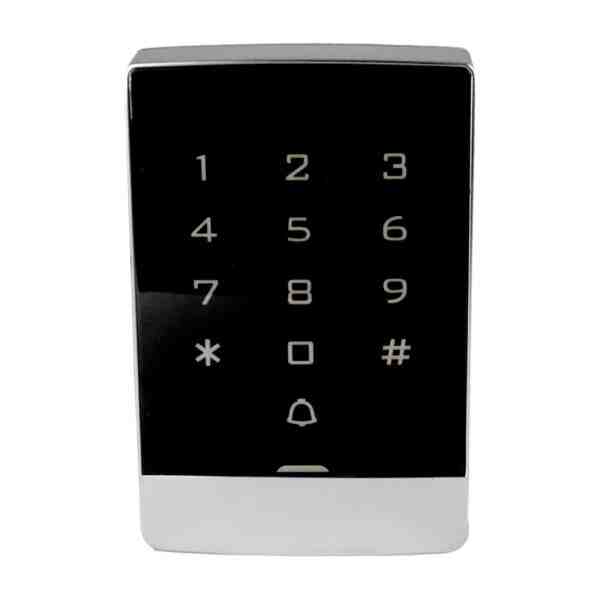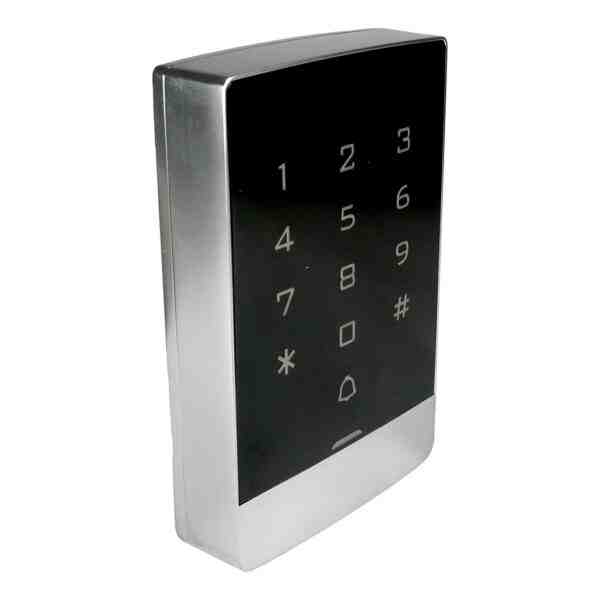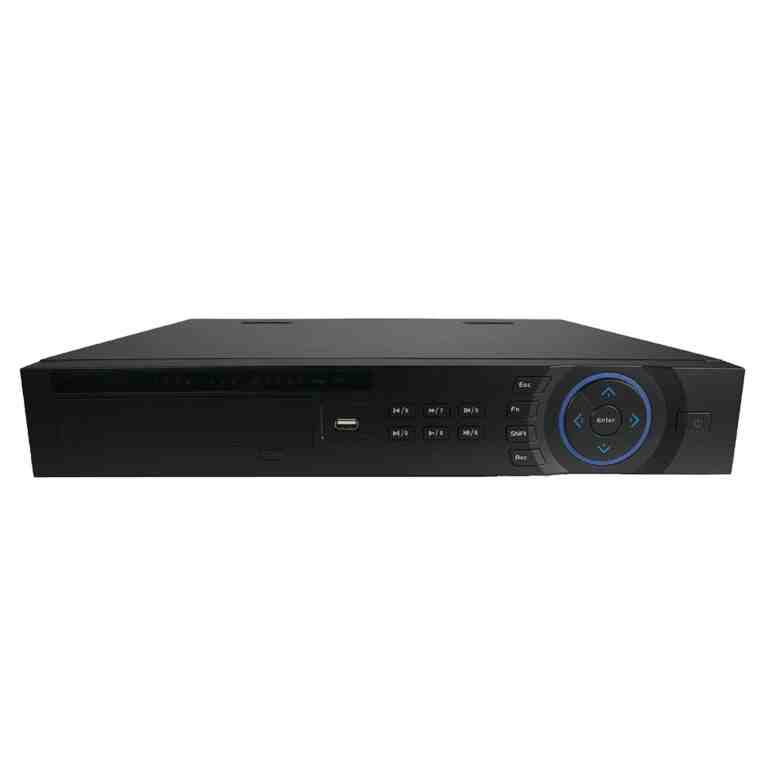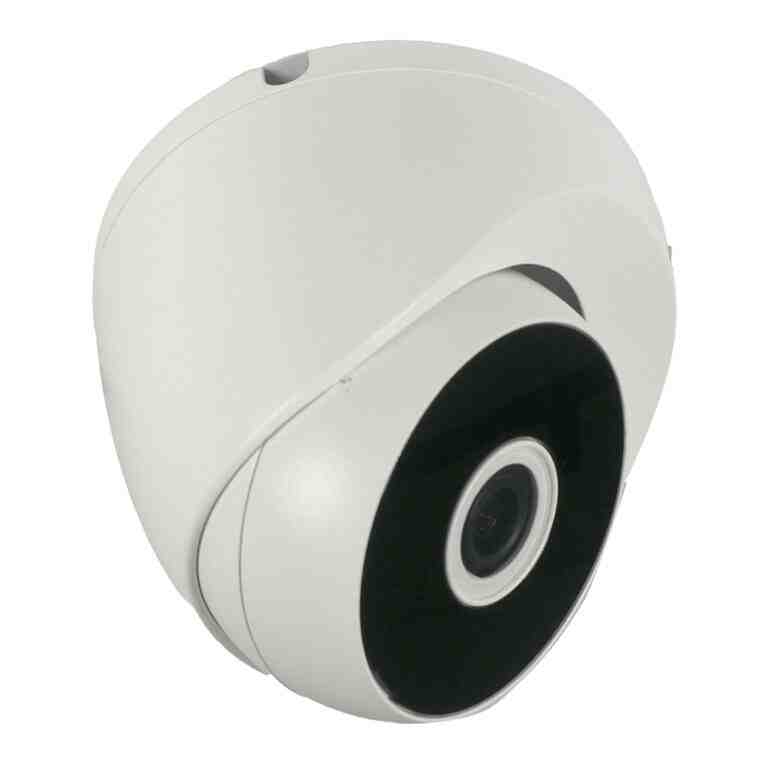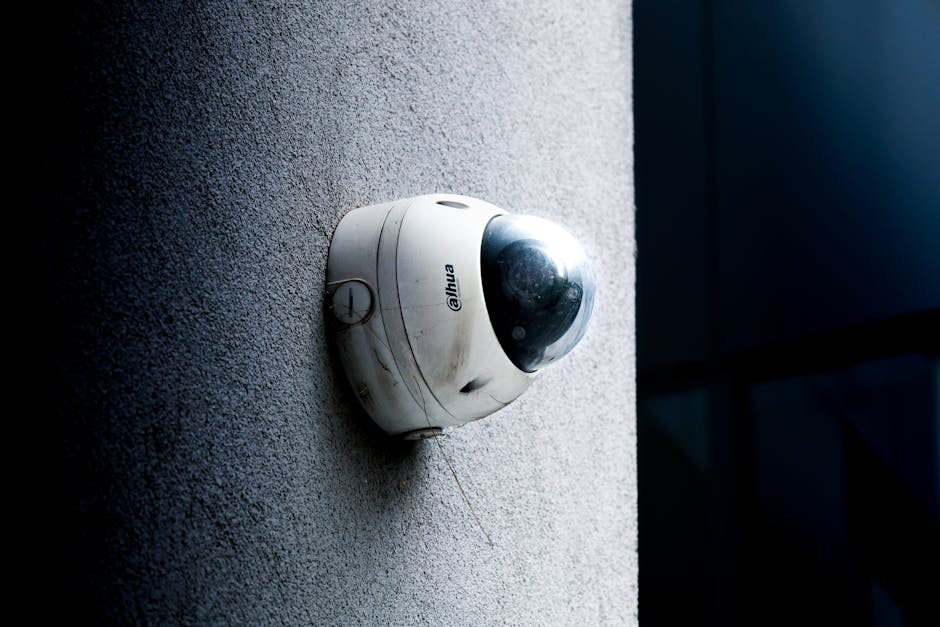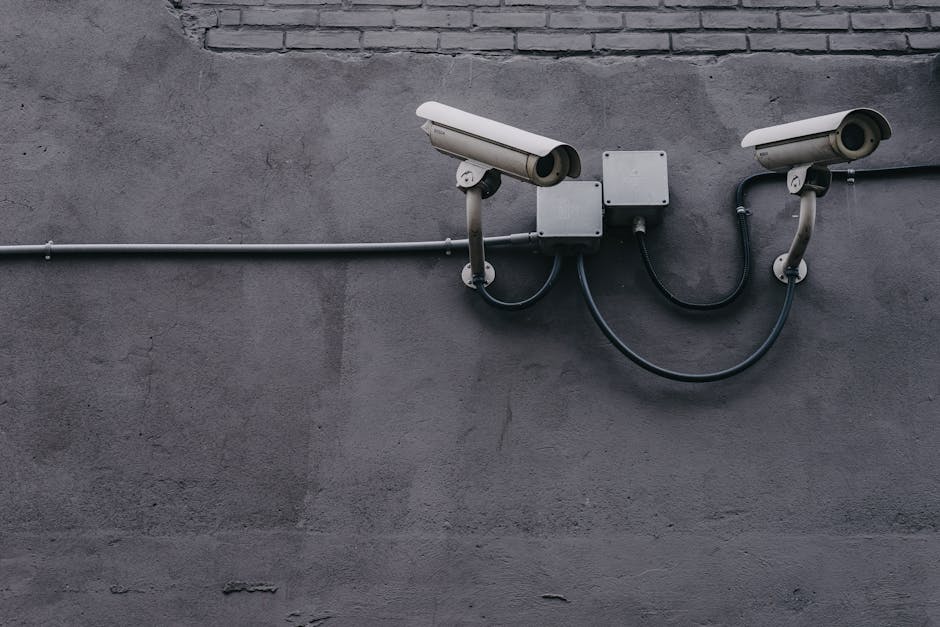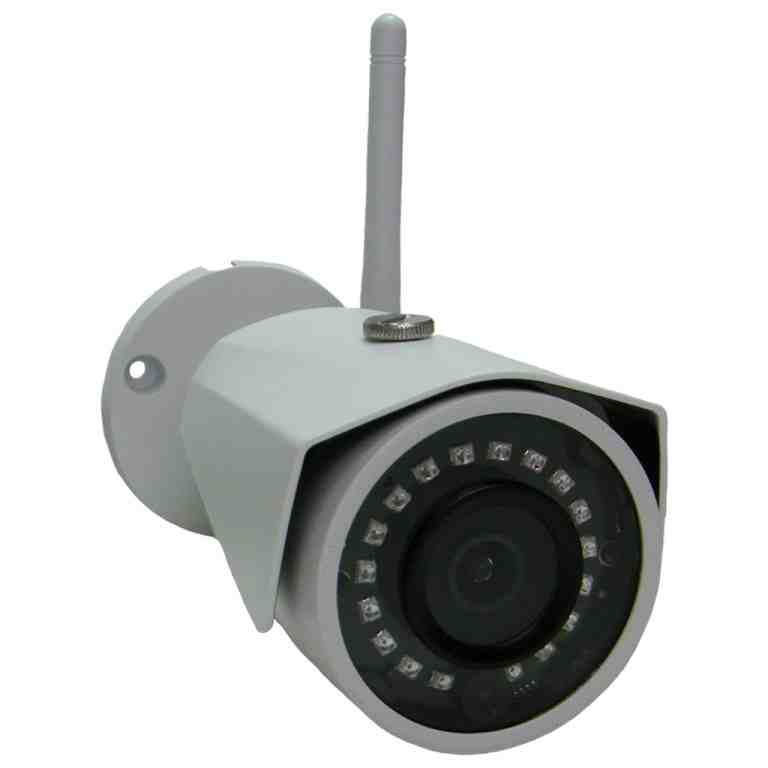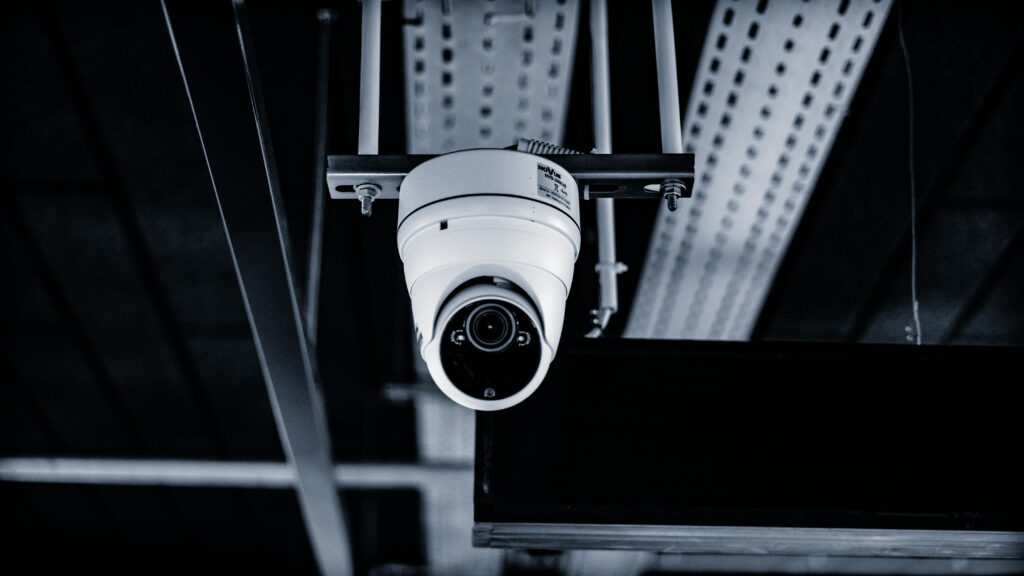Access Control Systems: 7 Best Powerful & Secure Picks 2025
Securing What Matters: Understanding Access Control Systems
Access control systems are security solutions that regulate who can enter specific areas of your business, when they can enter, and what resources they can access. They form the first line of defense for retail stores, offices, and other facilities.
Here’s what you need to know about access control systems:
| Type | Best For | Key Benefits |
|---|---|---|
| Cloud-based | Multi-location businesses | Remote management, automatic updates |
| On-premise | High-security environments | Complete data control, no subscription fees |
| Mobile credential | Modern workplaces | Touchless entry, no lost cards |
| Biometric | High-value areas | Cannot be shared or stolen |
| Simple keypad | Small businesses | Affordable, easy to implement |
Access control technology has evolved significantly over the past decade, shifting from simple key card systems to sophisticated platforms that integrate with your entire security ecosystem. Today’s solutions offer mobile credentials, cloud management, and real-time analytics that help retail managers like you prevent theft while monitoring operations remotely.
Modern systems allow you to instantly revoke access when employees leave, generate reports on who entered specific areas, and even integrate with your video surveillance to provide visual verification of entry events. This comprehensive approach not only improves security but also provides valuable operational insights.
I’m Brad Besner, founder of Security Camera King, Inc., with over 15 years of experience helping retailers implement effective access control systems that reduce shrinkage and improve operational efficiency. Our team specializes in selecting and configuring the right access control systems for retail environments where theft prevention and operational monitoring are critical concerns.

Common access control systems vocab:
– access control gate systems
– access control parking systems
– how to design access control system
Access Control Systems Buyer’s Checklist
When shopping for an access control system, it’s easy to get overwhelmed by technical specs and industry jargon. I’ve helped thousands of businesses find their perfect security solution, and I’ve learned that a methodical approach makes all the difference.
“The right access control system is the cornerstone of your entryway security, enabling you to manage who enters, when, and how, with visibility to all that’s going on,” explains our lead security consultant at Security Camera King.
Before you make any decisions, take time to evaluate what your business truly needs. Start by assessing which doors require security and what level of protection each area demands. Then consider your user count and typical traffic patterns – a busy warehouse has very different needs than a small office.
Your choice between cloud-based, on-premise, or hybrid deployment will significantly impact both your upfront costs and long-term experience. Don’t forget to check compatibility with your existing security infrastructure, and think about what credential types make the most sense for your team – whether that’s cards, mobile phones, PIN codes, or biometric options.
Always plan for growth! The system that fits perfectly today might feel constraining in a year if you can’t easily add more access points. And of course, be realistic about your budget, considering both initial installation and ongoing maintenance.

It’s worth noting that about 98% of employees view traditional access control as a constraint, highlighting why user-friendly solutions matter. With 70% of employees already using smartphones at work, mobile credential adoption has been skyrocketing – about 20% of companies implemented mobile access by early 2021.
When weighing your deployment options, consider these trade-offs:
| Deployment Model | Initial Cost | Ongoing Costs | Maintenance | Best For |
|---|---|---|---|---|
| Cloud-Based | Low-Medium | Monthly subscription | Vendor managed | Multi-site businesses |
| On-Premise | Medium-High | Low | Self-managed | High-security environments |
| Hybrid | Medium | Medium | Partially managed | Organizations with mixed needs |
| Edge-Based | Medium | Low-Medium | Minimal | Distributed locations |
For deeper insights into the technologies powering today’s systems, check out our Access Control Technologies resource page.
Core Components of Modern Access Control Systems
Every access control system works like an orchestra – multiple components playing together to create a secure environment. Understanding these building blocks will help you make smarter choices for your business.
The credentials your team uses are their keys to the kingdom. These might be physical cards or key fobs using RFID technology, smartphone-based mobile credentials using Bluetooth or NFC, simple PIN codes, or even biometric identifiers like fingerprints. Each option offers different levels of security and convenience.
Your readers are the gatekeepers, mounted at each access point to authenticate those credentials. These range from simple card readers to sophisticated multi-factor devices that might combine biometrics with PIN verification. The latest mobile-compatible readers can communicate with smartphones via Bluetooth or NFC, eliminating the need for physical cards altogether.
Behind the scenes, controllers serve as the brains of your system. “Modern controllers employ distributed processing architecture, allowing local decision-making so the system continues operating even if the central server is down,” notes our technical director at Security Camera King. These devices process authentication requests, store access rules, and communicate with your management software.
Speaking of management software, this is your command center – where you’ll define who can access which doors at what times, manage users, monitor system status, and generate reports. Modern platforms offer intuitive interfaces that make these tasks surprisingly simple.
Finally, there’s the physical hardware that actually secures your doors – electromagnetic locks, electric strikes, smart locks, and exit devices that physically prevent or allow entry based on signals from the controller.

If you’re concerned about power outages (and you should be), I recommend Power over Ethernet (PoE) solutions that provide battery-backed power to your locks and readers. For particularly sensitive areas, consider implementing multi-factor authentication (MFA) that requires users to present two or more verification methods before granting access.
Curious about the cutting-edge research happening in this field? This scientific research on IoT access control offers fascinating insights into where the technology is headed.
How Access Control Systems Integrate with Building Security
A truly effective security strategy connects your access control system with other building systems. This integration creates a comprehensive security ecosystem that’s far more powerful than any standalone solution.
When your access control talks to your video surveillance system, magic happens. Entry events can automatically trigger camera recording, creating visual documentation of every access attempt. Your access logs link directly to relevant video footage, making investigations infinitely easier. The system can even provide video verification to confirm a credential user’s identity, and unusual access attempts trigger immediate alerts with visual confirmation.
“By integrating access control with video surveillance, you create a powerful security tool that provides both prevention and investigation capabilities,” explains our systems integration specialist at Security Camera King.
Your alarm and intrusion detection systems become smarter too. They can automatically arm or disarm based on access events, trigger alerts for forced entries or propped doors, and reduce false alarms through intelligent verification. This unified approach means simpler monitoring and more comprehensive reporting.
Modern access control systems don’t stop at security – they can improve your entire building management approach. Your HVAC system can optimize energy usage based on actual occupancy data. Lighting controls can activate only when areas are accessed. Even elevator systems can restrict floor-level access based on credentials, and fire alarm systems can override access restrictions during emergencies.
For businesses with frequent visitors, integrated visitor management is a game-changer. You can pre-register expected guests, issue temporary QR codes or mobile passes, automate the check-in process, and maintain detailed visitor logs – all through the same system that manages employee access.
Our implementation data shows businesses that integrate access control with video surveillance see up to 35% faster security incident resolution and significantly fewer unauthorized access attempts. The whole truly is greater than the sum of its parts.
Want to learn more about creating a unified security approach? Visit our resource on Security Cameras and Access Control for practical implementation advice.
Best Cloud-Native Access Control Solution
Cloud-native access control systems have revolutionized how businesses approach security. Gone are the days of clunky on-site servers and complicated maintenance schedules. At Security Camera King, we’ve guided countless businesses through the transition to cloud-based solutions, and the results speak for themselves.
Think of cloud-based access control as your security system’s upgrade to first-class. You’ll enjoy these game-changing benefits:
Remote Management puts control at your fingertips, wherever you happen to be. Need to let in the cleaning crew at 7 AM while you’re still in bed? No problem. Got an urgent alert about an unauthorized access attempt? Handle it immediately from your phone. Managing multiple locations becomes dramatically simpler when everything is accessible through a single interface.
Automatic Updates and Maintenance might be my favorite cloud benefit. Your system silently improves in the background, with security patches and new features deploying automatically. No more scheduling IT visits or experiencing downtime during upgrades—your protection stays current without you lifting a finger.

The Scalability and Flexibility of cloud solutions is perfect for growing businesses. One of our clients started with just two doors and has since expanded to 23 access points across three locations—all without having to replace their core system. The subscription-based pricing model means you’re only paying for what you need right now, with the ability to scale up seamlessly.
When it comes to Redundancy and Reliability, cloud-native systems truly shine. A client in South Florida once told me, “During hurricane season, I sleep better knowing our access data isn’t stored on a server that could get flooded.” With built-in redundancy, automatic backups, and uptime guarantees typically around 99.9%, cloud solutions offer peace of mind that on-premise systems simply can’t match.
One of our retail clients in Boca Raton recently made the switch and shared: “We can now instantly issue temporary access to maintenance contractors, remotely open up doors for early deliveries, and immediately revoke access when employees leave—all from our smartphones. The peace of mind is invaluable.”
Want to dig deeper into software options? Visit our comprehensive guide to Access Control Software Solutions.
Stand-Out Features
What separates good cloud-native access control systems from truly great ones? It’s all in the details and advanced capabilities that transform basic door security into a powerful business tool.
Real-Time Dashboards and Analytics give you insights you never knew you needed. Imagine seeing exactly when your facility is busiest, identifying unusual access patterns that might indicate security concerns, or generating custom reports that help optimize staffing. One healthcare client used occupancy data to restructure their scheduling, saving enough in operational costs to pay for their entire system in just eight months.
Mobile Credentials and Management have become the gold standard in modern access control. Your smartphone becomes your key, eliminating the hassle of lost or forgotten cards. Administrators love the ability to grant temporary access with a few taps—perfect for visitors, contractors, or delivery personnel. Plus, touchless entry options have become increasingly valuable for health and safety reasons.

The Advanced Integration Capabilities of cloud systems create virtually limitless possibilities. With open APIs and webhook support, your access control can communicate with other business systems—from your HR database to your visitor management system. One manufacturing client integrated their access control with their production scheduling software, automatically adjusting access permissions based on shift changes.
Intelligent Automation takes the burden of routine tasks off your plate. Rules-based responses can handle everything from automatically locking down areas after hours to generating compliance reports for regulatory requirements. A property management client set up automated tenant access that activates on lease start dates and deactivates when leases end—no manual intervention required.
“The shift to cloud-native access control yields peace of mind through built-in redundancy and disaster protection,” notes our cloud solutions specialist. “With automatic over-the-air updates, your entrances remain secure without manual intervention.”
The best part? These advanced features are constantly improving through regular updates, ensuring your security investment becomes more valuable over time, not less.
Best On-Premise Enterprise Access Control Platform
When it comes to organizations with the most demanding security requirements, on-premise access control systems continue to reign supreme. These robust, server-based solutions offer what cloud alternatives simply can’t match: complete control, unparalleled customization, and absolute data sovereignty.
“On-premise systems provide the highest level of control and customization for organizations with complex security needs,” explains our enterprise solutions architect at Security Camera King. “They’re particularly valuable for government facilities, financial institutions, and critical infrastructure where data sovereignty is paramount.”
These enterprise-grade platforms shine in environments where security cannot be compromised. Your sensitive access data stays exactly where it belongs—within your network perimeter, never leaving your control. This approach eliminates reliance on third-party cloud infrastructure, giving you full authority over data retention policies and privacy practices.
For organizations navigating strict regulatory frameworks, this level of control isn’t just nice to have—it’s essential. On-premise solutions support sophisticated security models including Role-Based Access Control (RBAC), where permissions are assigned based on job functions; Mandatory Access Control (MAC) for highly structured environments; and Attribute-Based Access Control (ABAC) for dynamic, context-aware security decisions.

The dedicated server architecture of these systems delivers exceptional performance that cloud solutions struggle to match. With resources committed solely to your security operations, they handle high-volume traffic environments with minimal latency—critical for facilities where thousands of access events might occur daily. This local processing eliminates internet dependency, ensuring your entrances remain secure even when connectivity fails.
Enterprise integration capabilities are another significant advantage. These systems offer deep integration with corporate directory services, compatibility with legacy building systems, and custom API development for unique requirements. For organizations with established security operations centers, this seamless integration creates a unified security ecosystem rather than fragmented solutions.
For more comprehensive information about implementing physical security measures, visit our detailed guide on Physical Access Control Systems.
Why Enterprises Choose This Option
There’s a reason why many large organizations still prefer on-premise access control systems despite the cloud revolution. It comes down to specific requirements that simply can’t be compromised.
For the highest security environments, air-gapped networks provide best protection. By completely isolating your access control system from public networks, you create a fortress against external cyber threats. This physical separation isn’t just extra security—for facilities handling classified information or critical infrastructure, it’s often a non-negotiable requirement.
Regulatory compliance drives many enterprises toward on-premise solutions. Healthcare organizations bound by HIPAA, financial institutions navigating PCI DSS and SOX requirements, and government agencies under FISMA and NIST frameworks often find that maintaining complete data custody simplifies their compliance efforts.
“For organizations with dedicated IT teams and high-security requirements, on-premise solutions provide best control and customization,” notes our technical director. “The ability to maintain complete data custody and implement custom security rules makes these systems ideal for enterprises with complex security policies.”
Legacy integration represents another compelling reason for the on-premise approach. Many enterprises have invested millions in existing building management systems. On-premise access control solutions offer superior compatibility with these older systems, preserving your hardware investments while modernizing your security capabilities.
The total cost of ownership often favors on-premise deployments for large installations. While the initial investment may be higher, the absence of recurring subscription fees creates predictable costs over time. Organizations with existing IT infrastructure and expertise can leverage these resources, extending hardware lifecycles and maximizing their security investment.
One of our manufacturing clients in South Florida chose this path specifically for business continuity during hurricane season. When internet connectivity becomes unreliable during storms, their on-premise system continues functioning normally thanks to redundant power systems and controllers that make access decisions locally. This independence from external services proves invaluable during emergencies when security matters most.
For enterprises managing large user populations across complex facilities, the customization capabilities of on-premise solutions simply can’t be matched. The ability to implement highly specific access rules, manage thousands of credentials, and maintain complete control over every aspect of your security ecosystem makes these systems the clear choice for organizations where security is mission-critical.
Best Access Control System for Small & Growing Businesses
Small and medium-sized businesses need access control systems that are affordable, easy to implement, and don’t require specialized IT knowledge. At Security Camera King, we’ve helped hundreds of growing businesses in Boca Raton and beyond implement security solutions that scale with their needs.
These SMB-friendly systems offer:
Simplified Installation and Setup
– Plug-and-play controllers that connect to standard networks
– Pre-configured two or four-door starter kits
– Web-based setup wizards for easy configuration
– Minimal wiring and infrastructure requirements
User-Friendly Management
– Intuitive web interfaces accessible from any device
– Simple user and credential management
– Basic scheduling and reporting features
– Clear visual dashboards for system status
Affordable Entry Points
– Low initial hardware investment
– Flexible expansion options
– Subscription-free basic operation
– Optional cloud features for remote management
Scalability Path
– Start with a few doors and expand as needed
– Add features and capabilities incrementally
– Upgrade paths to more advanced functionality
– Compatible with growing security needs
“Small businesses often think advanced access control is out of reach, but today’s systems are designed to grow with your business,” explains our SMB solutions specialist. “You can start with basic door control and add features like mobile access and video integration as your needs evolve.”
For more information about card-based systems that work well for growing businesses, visit our Card Access Control Systems resource page.
Key Benefits for SMBs
Small and medium businesses gain specific advantages from implementing the right access control system. These benefits extend beyond basic security to improve operations and reduce costs.
Elimination of Key Management Headaches
– No more tracking physical keys or changing locks
– Instant deactivation of lost or stolen credentials
– Simplified employee onboarding and offboarding
– No expensive rekeying when staff changes occur
Improved Security with Limited Resources
– Automated locking schedules eliminate human error
– Detailed access logs for incident investigation
– Remote management reduces on-site requirements
– Integration with basic alarm and camera systems
Operational Insights
– Track employee arrival and departure times
– Monitor after-hours access to sensitive areas
– Identify unusual access patterns
– Generate time and attendance reports
Flexible Access Options
– Temporary access for contractors and visitors
– Time-restricted permissions for cleaning crews
– Department-specific access limitations
– Emergency lockdown capabilities
One of our retail clients in Boca Raton implemented a basic four-door system that paid for itself within months by eliminating after-hours trips to let in maintenance staff and providing evidence that helped resolve an internal theft case.
“We’ve seen businesses reduce their key-related expenses by up to 75% in the first year after implementing electronic access control,” notes our business solutions consultant. “The combination of improved security and operational efficiency creates rapid ROI for most small businesses.”
Best Mobile & Touchless Access Control Experience
Remember fumbling with keys or forgetting your access card? Those days are quickly becoming history. The pandemic fundamentally changed how we think about touching shared surfaces, and mobile-first access control systems have emerged as the natural solution for modern workplaces. These systems transform the smartphone already in your pocket into your secure building key.
“Our clients love the convenience of never forgetting their access credentials again,” says our mobile solutions specialist at Security Camera King. “When your phone becomes your key, everything just works more smoothly.”
Mobile access delivers a truly frictionless entry experience. With Bluetooth Low Energy (BLE) technology, you can simply wave your phone near a reader for instant access. For more controlled entry points, a quick NFC tap or QR code scan provides the perfect balance of security and convenience. Visitors can receive temporary access links via email or SMS, making reception check-ins faster and more efficient.
From an administrative perspective, mobile credentials shine brightly. You can issue or revoke access permissions instantly from anywhere – perfect for remote workers, contractors, or managing multiple locations. No more printing physical cards, scheduling in-person pickup, or worrying about unreturned badges when someone leaves.

Security actually improves with mobile access. Communications between phones and readers use strong encryption, and many systems can leverage the biometric security already built into modern smartphones. Your face or fingerprint verification adds an extra layer of protection that plastic cards simply can’t match.
The numbers tell the story of this rapid shift – about 70% of employees already use smartphones at work, making mobile credentials a natural evolution. By early 2021, 20% of companies had already implemented mobile access solutions, and that number continues to climb dramatically.
Why Mobile-First Access Control Systems Excel
There’s a reason mobile-first access control systems have become the fastest-growing segment in the industry – they simply work better in today’s world. The advantages extend far beyond basic convenience.
When it comes to visitor management, mobile systems truly shine. Receptionists can pre-register guests who receive access credentials directly on their phones before they even arrive. QR codes with built-in expiration times ensure visitors can’t return using old passes. During the pandemic, many systems added wellness screening questionnaires that visitors complete before gaining entry.
Integration with digital wallets has been a game-changer for user adoption. “The ability to store access credentials in Apple Wallet or Google Pay means employees can access doors, elevators, turnstiles, and even printers with a simple tap,” explains our integration specialist. “It feels familiar because it uses technology they already understand.”
The user experience remains consistent regardless of which building or campus you’re visiting. A single app works across multiple locations, creating a seamless experience for employees who travel between offices. This standardization also helps security teams implement consistent policies across properties.
Perhaps most importantly, people actually like using mobile access. One of our South Florida corporate clients reported 93% employee satisfaction after switching to mobile credentials – a significant jump from the 62% satisfaction with their previous card system. Employees particularly appreciate never having to worry about forgetting their access cards at home.
Mobile-first systems also support contactless entry, reducing shared touch surfaces – a health consideration that remains important to many organizations. The technology accommodates social distancing through occupancy monitoring and can even assist with contact tracing if needed.
With smartphones already an essential part of daily life, mobile credentials represent the natural evolution of access control – convenient, secure, and aligned with how we live and work today.
Best Biometric-Integrated Access Control Option
When it comes to securing your most valuable areas, access control systems with biometric integration offer best protection. At Security Camera King, we’ve seen how these advanced solutions transform security for our South Florida clients who need more than just basic card access.
Biometric access control creates a security layer that’s uniquely tied to each person’s physical characteristics – something that simply can’t be duplicated or shared like traditional credentials.
“I remember installing a biometric system for a medical research facility in Boca Raton,” shares our lead technician. “The director told me, ‘For the first time, I can sleep at night knowing exactly who accessed our labs and when – no exceptions.'”
Non-Transferable Authentication
Biometrics solve the age-old problem of credential sharing. Your fingerprint or face can’t be loaned to a coworker or forgotten at home. This creates true accountability since each access event is irrefutably linked to a specific individual, eliminating “buddy punching” where employees share access cards.
Multiple Biometric Options
Today’s systems offer impressive flexibility based on your specific needs:
Fingerprint recognition works wonderfully in most business environments, balancing security with convenience. Facial recognition provides a completely touchless experience – increasingly important in health-conscious workplaces. For absolute maximum security, palm vein or iris recognition technologies offer nearly impossible-to-defeat authentication for your most sensitive areas.

Advanced Anti-Spoofing Protection
Modern biometric systems are remarkably sophisticated in detecting fraud attempts. Today’s readers use liveness detection to ensure they’re reading an actual person, not a photo or mask. The AI-powered algorithms continuously improve through machine learning, staying ahead of potential threats.
“Biometric access control provides a robust authentication method because biological traits are nearly impossible to replicate,” explains our biometric solutions expert. “When implemented correctly with proper privacy protections, these systems offer the perfect balance of security and convenience.”
Privacy-First Implementation
We understand privacy concerns are real. That’s why we implement systems that convert biometric data into encrypted mathematical templates rather than storing actual images of fingerprints or faces. This approach ensures compliance with regulations like GDPR and CCPA while still providing top-tier security.
For organizations with strict privacy requirements, we offer options where biometric templates can be stored on personal cards rather than in centralized databases, giving users complete control of their biometric data.
For deeper insights into protecting biometric information, this research on biometric security offers valuable perspectives on best practices.
Advanced Security Capabilities
The sophisticated technology behind biometric access control systems enables security features that traditional access methods simply can’t match. These capabilities make biometrics the gold standard for protecting sensitive areas and information.
Multi-Factor Authentication That Actually Works
Combining biometrics with something you have (like a card) or something you know (like a PIN) creates truly robust security. We can customize these combinations based on your specific security needs – perhaps requiring just a fingerprint for general areas but adding a PIN code for server rooms or executive suites.
One manufacturing client told us, “The flexibility to adjust security levels for different zones has been a game-changer for us. Regular employees use fingerprints for the main entrance, but our R&D lab requires both fingerprint and PIN – simple but incredibly effective.”
Impressively Fast Processing
Gone are the days of slow, frustrating biometric readers. Modern systems authenticate users in under a second, even in high-traffic environments. The advanced algorithms can process multiple factors simultaneously, keeping lines moving and employees happy.
Seamless Identity Management Integration
Today’s biometric systems don’t exist in isolation. They integrate beautifully with your broader identity management ecosystem, enabling centralized enrollment and consistent identity verification across both physical access points and logical systems like computer logins.
Adaptive Security That Responds to Threats
Smart biometric systems can automatically adjust security requirements based on detected threat levels. For example, during normal operations, a single biometric might suffice, but if unusual access patterns are detected, the system can automatically require additional verification factors.
“The combination of facial recognition for identification and fingerprint verification creates an extremely secure yet user-friendly experience,” notes our technical director. “With modern sensors and algorithms, we can process hundreds of people per hour with greater security than traditional methods.”
A government contractor we worked with in Florida saw security incidents drop by 87% after implementing our multi-factor biometric system – all while actually improving how quickly employees could enter secure areas compared to their previous card-and-PIN setup.
The beauty of today’s biometric solutions is they no longer force you to choose between security and convenience – you truly can have both.
Frequently Asked Questions about Access Control Systems
What are the main security risks and how do I mitigate them?
Even the best access control systems can face security challenges. After helping hundreds of businesses secure their facilities, we’ve identified several common vulnerabilities that smart security planning can address.
The number one physical security risk we see? Tailgating. This happens when unauthorized people simply follow authorized users through doors before they close. It’s surprisingly common and entirely preventable.
“I’ve watched CEOs hold doors open for complete strangers while chatting on their phones,” shares our lead security consultant. “All the sophisticated technology in the world can’t overcome basic human courtesy that bypasses security.”
To prevent tailgating, consider installing turnstiles or mantrap vestibules in sensitive areas. Security cameras covering entry points also serve as both deterrents and evidence collectors. Most importantly, regular security awareness training reminds employees that security is everyone’s responsibility.
Credential theft or sharing presents another significant vulnerability. Whether it’s an employee lending their access card to a colleague who forgot theirs, or a stolen credential being misused, the solution often involves layering your security approach. Implementing multi-factor authentication—combining something you have (card) with something you know (PIN) or something you are (biometric)—dramatically reduces this risk.
For networked systems, cyber vulnerabilities require attention too. Keep all firmware and software updated, segment your access control network from general IT systems, and encrypt communications between components. Strong administrative passwords and regular security assessments round out a solid cyber-defense strategy.
Don’t overlook the simple physical bypass of doors being propped open or forced. Door position switches, properly configured alarms, and integration with your video surveillance provide effective countermeasures against these basic but common threats.
Cloud vs. on-premise access control systems – which costs less long term?
When clients ask me about the cost comparison between cloud and on-premise access control systems, I always start by saying, “It depends on your situation—but I can help you do the math.”
Cloud-based systems typically require 50-70% less upfront investment than their on-premise counterparts. You’ll avoid purchasing servers, expensive software licenses, and additional IT infrastructure. Both options still require similar door hardware—readers, controllers and locks.
Where things get interesting is in the ongoing expenses. Cloud systems charge predictable monthly subscriptions (typically $5-15 per door per month), while on-premise systems have lower recurring fees but require you to handle:
- Server maintenance and eventual replacement every 3-5 years
- IT staff time for updates and management
- Software maintenance agreements
- Periodic system upgrades when new features are needed
For a typical 50-door system over five years, the math often looks like this: Cloud solutions require a lower initial investment ($30,000-$50,000) plus monthly fees totaling $15,000-$45,000 over that period. On-premise solutions need a higher initial investment ($60,000-$90,000) plus maintenance costs of $10,000-$20,000.
“Small and medium businesses usually find better value in cloud solutions because they eliminate the IT overhead,” explains our financial analyst at Security Camera King. “Larger enterprises with existing IT infrastructure and staff might see better economics with on-premise solutions over a 7-10 year timeline.”
The hidden factor many forget? Opportunity cost. Cloud solutions free your team to focus on your core business rather than managing security infrastructure.
How often should access control systems be audited or updated?
Regular maintenance keeps your access control system both secure and reliable. After supporting thousands of installations, we’ve developed some practical guidelines for system upkeep.
User access rights should be reviewed quarterly—sooner if you experience significant staff turnover. This simple audit often reveals surprises: former employees with active credentials, contractors with excessive access, or permissions that no longer match job responsibilities.
“The most common issue we find during system audits is access bloat,” notes our service manager. “Without regular cleanup, systems accumulate unnecessary permissions that create security vulnerabilities.”
We recommend purging unused credentials monthly, reviewing failed access attempts weekly, and investigating door alarm events daily. A comprehensive security audit should happen annually, examining your entire access ecosystem for vulnerabilities.
Software updates follow different schedules depending on your system type. Security patches should be applied as released (typically monthly). Cloud systems typically receive feature updates quarterly, while on-premise systems might see annual updates. Always follow vendor recommendations for operating system updates, and perform database maintenance monthly to keep everything running smoothly.
Don’t neglect the physical components either. Readers should be cleaned and inspected quarterly—especially outdoor units exposed to weather. Door hardware testing should happen twice yearly, while backup batteries need quarterly testing to ensure they’ll work when you need them most. Most access cards and fobs should be replaced every 3-5 years as they can deteriorate with regular use.
For our clients with cloud-based systems, most updates happen automatically behind the scenes. If you’re running an on-premise system, establish a defined update schedule with proper testing procedures before deploying changes to your production environment.
Regular maintenance isn’t just about keeping things working—it’s about adapting your security to your evolving business needs.
Conclusion
The landscape of access control systems continues to evolve rapidly, with innovations in mobile technology, biometrics, and cloud computing reshaping how organizations approach physical security. As we’ve explored throughout this guide, today’s solutions offer unprecedented flexibility, intelligence, and integration capabilities that go far beyond simply controlling who enters your building.
When I speak with our clients at Security Camera King, I’m always struck by how quickly they recognize that modern access control systems are as much about operational efficiency as they are about security. The right system becomes an invaluable business tool that provides actionable insights while creating a seamless experience for everyone who interacts with your facility.
“The future of access control isn’t just about keeping the bad guys out—it’s about creating intelligent spaces that adapt to how people actually work,” explains our lead systems architect. “We’re seeing AI analytics transform raw access data into patterns that help businesses optimize everything from staffing to space utilization.”
For organizations concerned about future-proofing their investment, today’s cloud-native solutions offer continuous updates and new capabilities without requiring hardware replacement. This subscription approach ensures your security technology evolves alongside emerging threats and compliance requirements.
Speaking of compliance, we’re seeing increasing regulatory pressure across industries to implement proper access controls and maintain detailed audit trails. Whether it’s HIPAA in healthcare, PCI DSS in retail, or NIST guidelines for government contractors, access control systems have become essential for demonstrating due diligence in protecting sensitive areas and information.
At Security Camera King, our team in Boca Raton specializes in designing custom solutions that balance security needs with practical considerations like budget constraints and user experience. We understand that the perfect system for a hospital will look quite different from what works best for a small retail store or multi-building corporate campus.
“I always tell our clients that security should enable your business, not restrict it,” notes our CEO. “When we design an access control solution, we’re thinking about how to make your employees’ lives easier while actually improving your security posture.”
As you evaluate options for your organization, the best system is one that addresses your specific security risks while supporting your operational goals. The technology should fade into the background of daily life while quietly providing the protection and insights you need.
For more information about our complete range of access control products and services, visit our Access Control Products page or contact our security experts for a personalized consultation. We’re always happy to help you steer the options and find the perfect fit for your unique requirements.

